Cranfield University
Type of resources
Topics
Keywords
Contact for the resource
Provided by
Years
Formats
Representation types
Update frequencies
Resolution
-
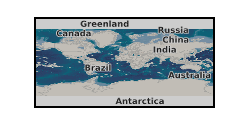
The data set encompasses the data generated through the 8 experimental runs on the 25 kWth calcium looping pilot plant at Cranfield University arranged into 8 functional Excel spreadsheets. The operational data are gathered by the acquisition with Labview software (the composition of the gas from the calciner and carbonator; temperatures of the electrical furnaces on the preheating lines and around the calciner; temperatures of the gas in the preheating lines and in the calciner) and Pico software (temperatures in the carbonator and lower loop seal and pressures in the calciner and in the carbonator). Moreover, the data from the experimental diary (inputs of gasses and solids into the rig) and the data from the post-processing of the extracted solids are included. All the data are combined into comprehensible charts that describe and explain the experimental runs together with the mass and energetic model of the system during steady state operations.
-
The data offers insights to utility of single particle ultraviolet light- induced fluorescence (UV-LIF) measurements in providing quantification and spatio-temporal characterisation of bioaerosols alongside the size distribution and characteristics of biological materials in airborne particles based on intrinsic bio fluorophores signatures. A novel ultraviolet light-induced fluorescence (UV-LIF) based bioaerosol sensor unit (Spectral Intensity Bioaerosol Sensor (SIBS)) was evaluated. The SIBS measures size, number, shape, and resolved fluorescence emission across 16 wavelength bands from 298 - 735 nm for two excitation wavelengths (285 nm and 370 nm) for single particles in real-time. Measurements entailed the chamber-based studies and real world environments (composting, dairy farms, chicken farms, sewage treatment plants, urban background, agricultural). This data stems as a part of a project (Detection and characterisation of inflammatory agents associated with bioaerosol emitted from biowaste and intensive agriculture) funded by the Natural Environment Research Council [NE/M01163/1]. The award was made under the auspices of the Environmental Microbiology and Human Health programme. The principal purpose was to assess the capabilities of the SIBS to enhance understanding of the bioaerosols emission and dispersion from industrial processes. Full details about this dataset can be found at https://doi.org/10.5285/98970053-b34c-44da-97bd-fbfc38fa8b7a
-
This dataset contains a water resource systems model for the Sutlej-Beas system in western Himalayas. It includes all the files required to run the model for the historical period 1989-2008 and climate change scenarios for the middle (2032-2050) and end of the century (2082-2100) considering the uncertainty associated to different Representative Concentration Pathways and Global Climate Models. The WEAP model was built within the “Sustaining Himalayan Water Resources in a Changing Climate” (SusHi-Wat) project (NE/N015541/1), funded by the UK Natural Environment Research Council and the Indian Ministry of Earth Sciences through the Newton-Bhabha Fund. Full details about this application can be found at https://doi.org/10.5285/715db0b2-1d63-4842-ab80-f0f33b39e5e0
-
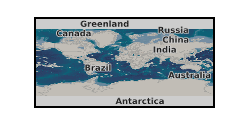
Experimental results used to parameterise and a test a mathematical model of uranium diffusion and reaction in soil. The exeperiments and model are described in Darmovzalova J., Boghi A., Otten W., Eades, L., Roose T. & Kirk G.J.D. (2019) Uranium diffusion and time-dependent adsorption-desorption in soil: a model and experimental testing of the model. Eur. J. Soil Sci., doi: 10.1111/ejss.12814. The research was funded by NERC, Radioactive Waste Management Ltd and the Environment Agency through the Radioactivity and the Environment (RATE) programme (Grant Ref NE/L000288/1, Long-lived Radionuclides in the Surface Environment (LO-RISE)).
-
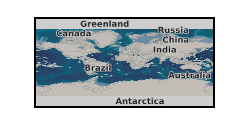
This poster on the UKCCSRC Call 2 project UK Demonstration of Enhanced Calcium Looping and first Global Demonstration of Advanced Doping Techniques was presented at the CSLF Call project poster reception, London, 27.06.16. Grant number: UKCCSRC-C2-209. Calcium (carbonate) looping is a promising carbon capture technology, which has been successfully demonstrated using a slip stream from the exhaust of a large-scale power plant. CO2 is captured as CaCO3, and is then calcined to release a pure stream of CO2 suitable for storage. The main advantage of this cycle is that the exothermic CO2 capture stage takes place around 650°C and the heat released in the carbonation process can be used in a standard steam cycle. The aims of this project are: • To demonstrate the viability of enhanced calcium looping technologies for CCS using a pelletized spent lime stream. • To demonstrate the viability of calcium looping for the removal of CO2 from industrial gases (steel and iron industry and cement industry). • To explore the use of enhanced Ca looping using HBr as doping agent.
-
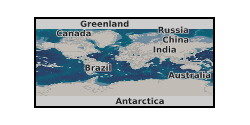
This poster on the UKCCSRC Call 2 project, UK demonstration of Enhanced Calcium looping, and first Global Demonstration of Advanced Doping Techniques, was presented at the Cardiff Biannual, 10.09.14. Grant number: UKCCSRC-C2-209.
-
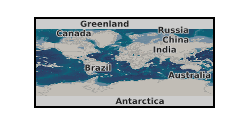
Final report for UKCCSRC Call 2 project, UK demonstration of Enhanced Calcium looping, and first Global Demonstration of Advanced Doping Techniques. Grant number: UKCCSRC-C2-209.
-
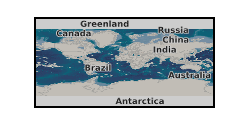
This project contributes significantly to the de-risking of a technology which has a significantly lower efficiency penalty than post-combustion capture using Monoethanolamine (MEA) scrubbing. The work here specifically targets two industrial sectors where MEA scrubbing is at a significant disadvantage (only ~ 30 % of the low-grade heat required for MEA scrubbing is present in a cement plant, for example [1]), and in both cases the spent CaO is valuable as an input to the process itself (either as the main feedstock for cement clinker production, or as a flux in iron production). The project builds on several current projects at both Imperial College and Cranfield University and offers excellent value for money because of these synergies. Grant number: UKCCSRC-C2-209.
-
The data comprises river section, zone and test site delineation, winter Season average NDVI by section and zone 1989-2020, land cover maps seasonally 1989-2020, and derived land cover fractions by section and zone 1989-2020. The data was produced as part of a study to determine how changes in geomorphic form and dynamics due to human alteration to river flows and riparian land management relate to changes in vegetation communities in the Sutlej and Beas Rivers, India. Vegetated and other land cover, including water area, were quantified by winter season NDVI trends (in the plains of Punjab) and seasonal supervised classification of Landsat data for over a 30-year period. The work was supported by the Natural Environment Research Council (Grant NE/S01232X/1). Full details about this dataset can be found at https://doi.org/10.5285/9a96e199-34d0-46f9-9a64-140d300a2531
-
The data was produced as part of a study to determine human impacts on river planform change within the context of short- and long-term river channel dynamics. To this end, the Himalayan Sutlej-Beas River system was used as a case study to (i) systematically assess changes in river planform characteristics over centennial, annual, seasonal, and episodic timescales; (ii) connect the observed patterns of planform change to human-environment drivers and interactions; and (iii) conceptualise these geomorphic changes in terms of timescale-dependant evolutionary trajectories. The dataset was derived from historic maps (1847-1850) and remote sensing data (Landsat over a 30-year period). It comprises post monsoon season wet river area annually 1989-2018, post monsoon season active gravel bars annually 1989-2018, active channel area (maximum extent between 1989-2018), active channel width annually 1989-2018, active channel width assessed from historic map (1847–1850), and the Anabranching index, annually 1989-2018. The work was supported by the Natural Environment Research Council (Grant NE/S01232X/1). Full details about this dataset can be found at https://doi.org/10.5285/f7aada06-7352-44c0-988e-2f4b31690189
 NERC Data Catalogue Service
NERC Data Catalogue Service